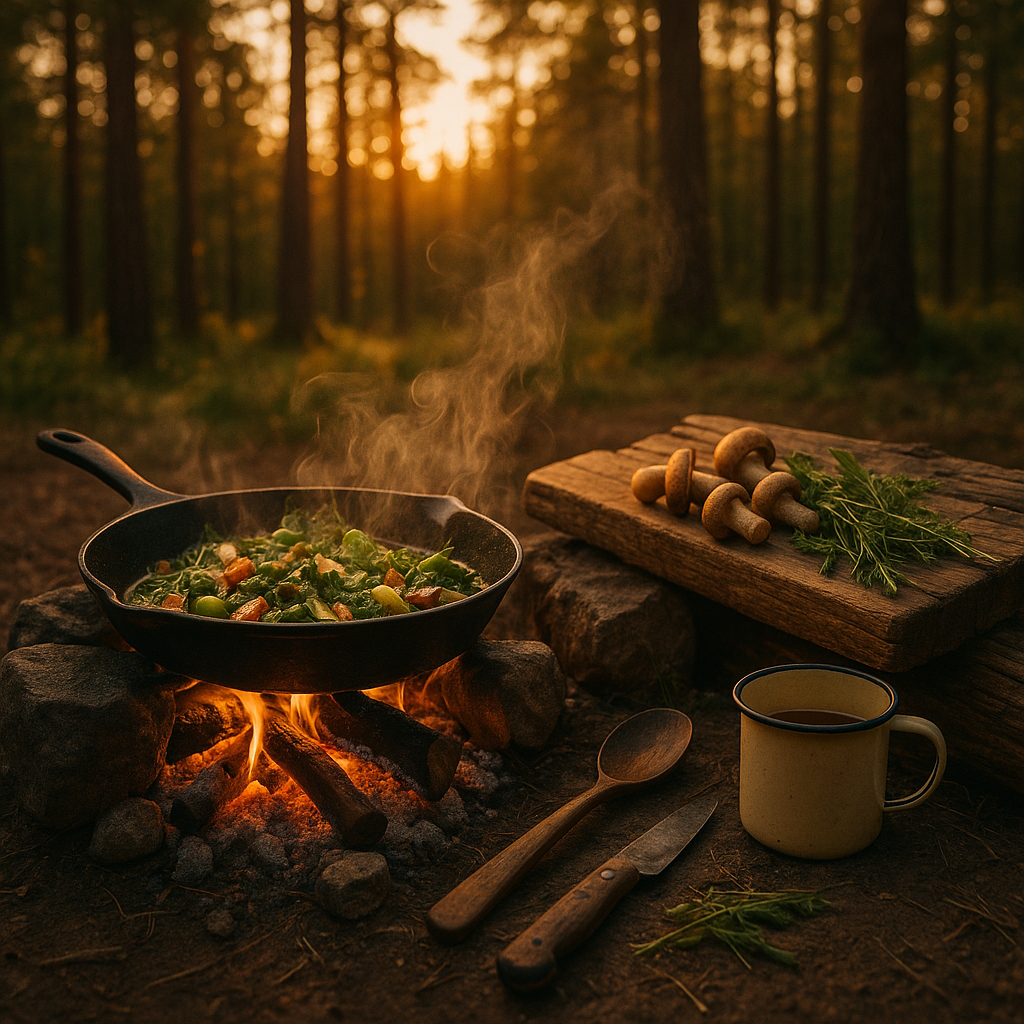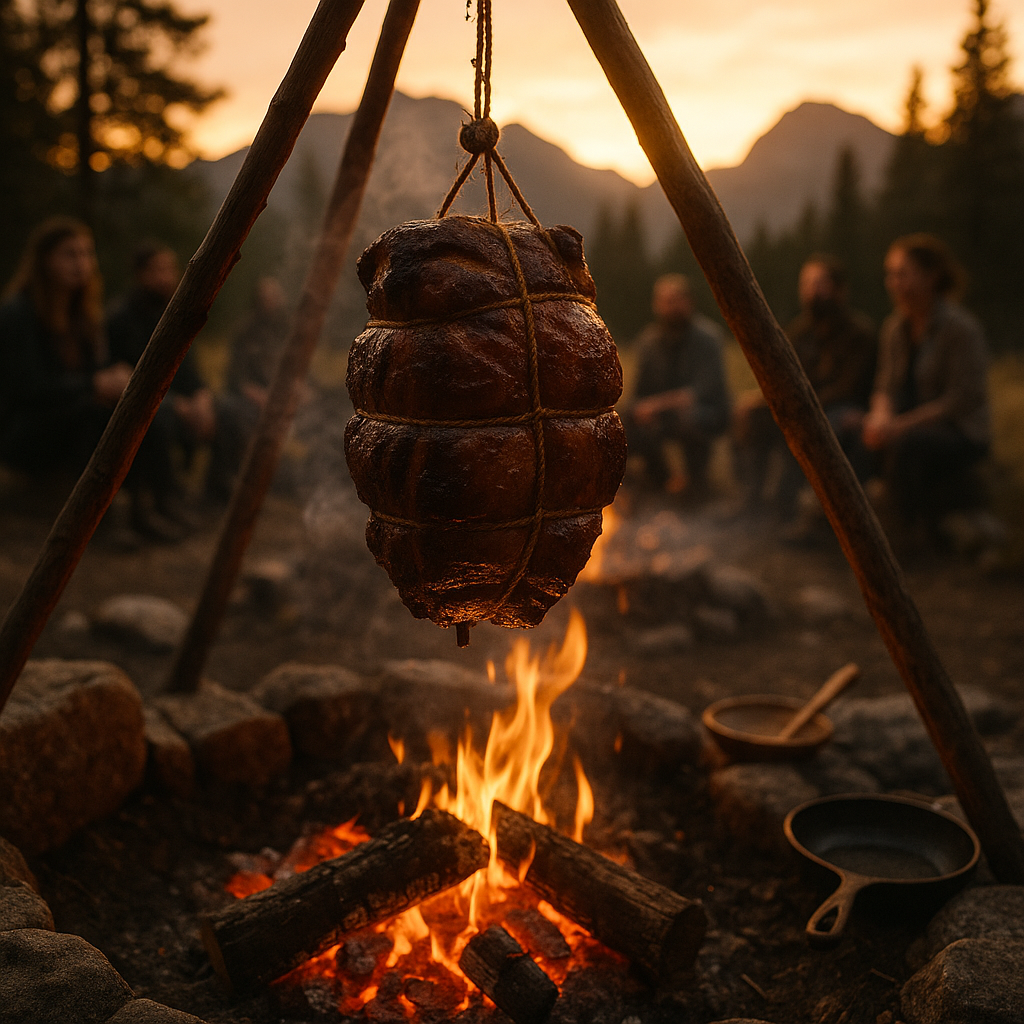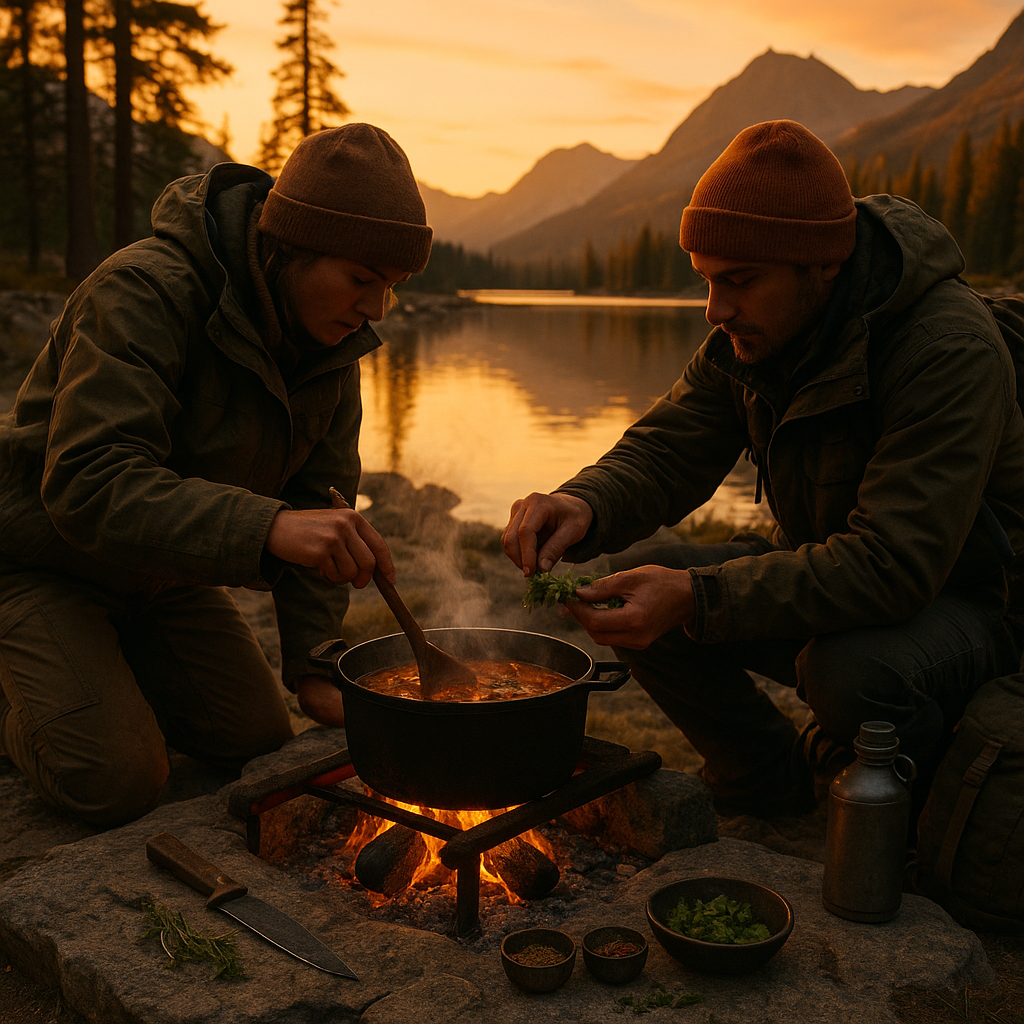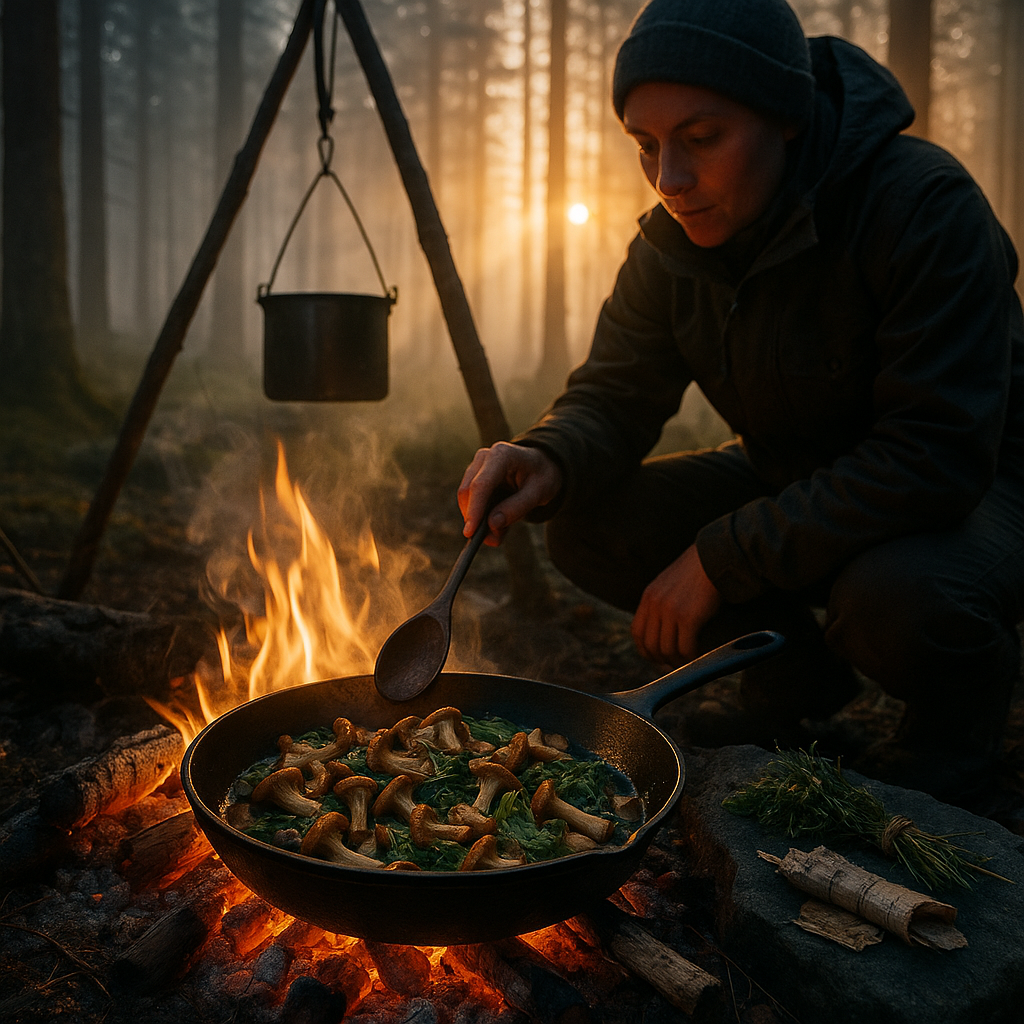Key Takeaways
- Solitude transforms cooking into a moving meditation. Preparing meals alone in nature establishes a calming, meditative rhythm where the rustle of wind and birdsong replace digital distractions, fostering a profound sense of presence and tranquility.
- Mindful cooking in the wild heightens sensory awareness. The peaceful stillness of solitude sharpens each sense, allowing you to truly savor the textures, aromas, and flavors of ingredients, as well as the unique sounds and scents of your environment.
- Nature ignites culinary creativity. With limited resources and a backdrop of ever-changing landscapes, cooking outdoors encourages inventive solutions and intuitive use of ingredients, often leading to beautifully simple and inspired meals.
- Dining alone nurtures deep self-reflection. When you eat amidst the wilderness, the act becomes a personal ritual, space to connect with your thoughts, practice gratitude, and experience the meal as a form of mindfulness.
- Wilderness cooking builds resilience and independence. The process of sourcing, preparing, and enjoying food in remote surroundings strengthens problem-solving abilities and nurtures self-reliance, equipping you to thrive amidst unpredictability.
- Meals become conversations with the natural world. Cooking outside intertwines your meal with the landscape, whether through foraging wild herbs, cooking over an open fire, or simply dining beneath a canopy of stars.
- Solitude redefines the solo dining experience. In the wild, eating alone is recast as an empowering, fulfilling practice, challenging outdated stigmas and highlighting the joy and growth found in genuine self-company.
Cooking alone in wild places is never just about survival or efficiency. It is a deep, enriching journey into stillness, creativity, and self-discovery. As we journey ahead, we’ll uncover how to cultivate this transformative practice, complete with insights and tips to create sacred, meditative meals in even the most remote corners of nature.
Introduction
A campfire flickers amber, illuminating the gentle motion of your hands gathering wild herbs, guided only by instinct and the gentle hush of untouched forest. In this fleeting golden hour, solitude in meal preparation becomes more than sustenance. It emerges as a ritual, a living meditation woven through the breath of trees and the steady pulse of earth and sky.
The act of preparing food alone in such places sharpens our awareness, dismissing distractions and inviting deep gratitude for each nuance of taste, texture, and fragrance. Here, wilderness cooking transcends sheer practicality. It becomes an inward journey; an opportunity for stillness, reflection, and artistry against a backdrop that humbles and awakens.
In the following exploration, we’ll reveal how solitude at the campfire ignites new layers of presence, resilience, and fulfillment, making every wilderness meal a sensory and soulful feast.
Stay Sharp. Stay Ahead.
Join our Telegram Channel for exclusive content, real insights,
engage with us and other members and get access to
insider updates, early news and top insights.
 Join the Channel
Join the Channel
The Sacred Art of Solitary Wilderness Cooking
Embracing the Silent Kitchen
Solitary cooking in the wild distills the culinary process to its most essential form. The absence of the familiar clamor means the scrape of a knife on wood becomes a focal sound, resonating differently among ancient rocks and tall pines. Amid this quiet, the rising steam from your pot drifts like a morning mist, carrying with it not just heat, but a silent promise of nourishment that feeds both body and spirit.
Without the pressure of digital buzzers and kitchen clocks, you sync to the ancient rhythms of sun and wind. Daylight shapes your cooking rituals, while clouds and shifting breezes nudge your decisions. In this space, preparing a meal becomes less about haste and more about savoring each motion, a meditation in motion.
The Mindful Methods of Solo Food Preparation
True wilderness cooking demands a presence that is often lost in modern kitchens brimming with convenience. Every action, however small, invites attention. Fundamental practices intertwine necessity with mindfulness:
- Mise en Place as Grounding Ritual: Carefully arranging ingredients by the fire becomes an act of quiet preparation, each item purposeful and ready for transformation.
- Fire Tending as Communion: The ancient craft of managing flame asks for your full presence, guiding you into the dance of heat, light, and patience.
- Water Gathering as Connection: Drawing water from a spring, stream, or dew-laced leaves brings you close to the heartbeat of the landscape.
Such mindful acts transform mundane chores into moments of wonder, opening space for insight and gratitude that rarely surface amid the rush of everyday life.
Finding Freedom in Simplified Menus
When alone in the wild, the abundance of choice falls away. With only your pack’s contents and what the land allows, cooking becomes a dialogue between self and environment. Paradoxically, these constraints spark freedom, inviting you to invest deeply in the essentials.
A basic pot of grains, livened with forest greens or wild mushrooms, evolves into an act of quiet inventiveness. The simple ritual of brewing wildflower tea at sunrise becomes a celebration, each sip tied to the earth beneath your feet and the day’s first light. Simplicity, far from limiting, becomes the muse that drives true culinary creativity.
The Dance of Fire and Patience
Fire, in the wild, is both tool and teacher. Unlike flicking a stovetop, open-flame cooking requires an intimate understanding of your surroundings. Mastery demands:
- Respecting shifting winds as both challenge and ally.
- Learning how different woods burn, and how their scents and smokes season your meal.
- Embracing patience as coals mature, and temperatures become an art instead of a setting.
- Adapting quickly to weather, understanding that rain and cold may rewrite your plans.
Waiting for flames to quiet into embers offers space to breathe and reflect. Each phase, gathering fuel, tending fire, savoring the gradual transformation, becomes as meaningful as the eating itself.
Creating Sacred Space in Wild Places
Establishing your wilderness kitchen is more than practical. It is the quiet art of creating sacred space wherever you roam. Stones may become a countertop, a mossy log your table, the reach of sunlight your dining room. Even the orientation of your cooking, perhaps facing east to greet the dawn, imbues the act with intention and belonging.
Responding to the landscape, you transform a transient cooking spot into a place of meaning and connection. Meal by meal, you honor both your needs and the spirit of the land.
The Rhythm of Solitary Food Preparation
With no rush or external noise, wilderness cooking adopts its own delicate flow:
- Dawn rituals of water collecting and fire lighting, hands working quietly as the world wakes.
- Midday foraging or thoughtful unpacking, adding vibrancy and freshness to simple dishes.
- Evening rituals, where preparation and savoring the meal become silent recaps of the day’s journey.
- Careful, no-trace cleanup as an act of gratitude, leaving the land unscarred for those who follow.
This unhurried cadence creates space for reflection, turning each chore into a mindful act that honors both the self and the wider world.
Nourishment Beyond the Physical
Solitary wilderness meals go far beyond the physical need for fuel. They become ways to:
- Rekindle self-reliance and quiet confidence, knowing you can nurture and sustain yourself.
- Foster deeper engagement with the land, each ingredient and action forging new bonds.
- Practice mindfulness naturally, as each stage of cooking aligns you with present-moment awareness.
- Experience food in heightened detail, where even humble staples offer profound satisfaction.
Eating alone becomes an act of reverence, each bite carrying the memory of its making, each meal an offering both to yourself and to the wild.
Tools as Extensions of Intention
Every chosen tool assumes greater meaning. A trusted knife isn’t just for cutting, it is an extension of your care, craftsmanship, and respect for nature’s gifts. Choose tools for their simplicity and multipurpose function. Keep them sharp, clean, and cherished. Understand their strengths and limitations.
Cultivate skill and mindfulness in their use, allowing these tools to become natural partners in your rhythm of creation. This approach brings a sense of intentionality and grace to each meal, while reinforcing the bond between maker and environment.
Stay Sharp. Stay Ahead.
Join our Telegram Channel for exclusive content, real insights,
engage with us and other members and get access to
insider updates, early news and top insights.
 Join the Channel
Join the Channel
Weather as Teacher and Guide
The elements are no longer obstacles, but vital partners. Rain fosters resourcefulness, wind shapes your fire, and sunlight becomes the day’s metronome. Embracing weather as a collaborator deepens your adaptability:
- Let wind patterns inform where you build and how you tend your fire.
- Gather rainwater for cooking or drinking, experiencing nature’s cycles firsthand.
- Understand how chill or heat alters both your preparation and your food.
- Allow shifting light to set the day’s culinary pace, working alongside changing conditions.
Welcoming the unpredictability of the wild strengthens resilience, and teaches you to move in harmony with a worl





Leave a Reply